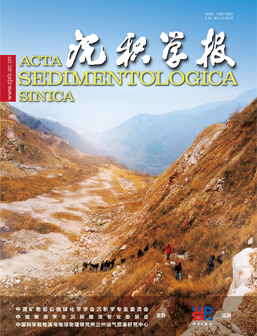Genetic difference of Bitumen Filling and its controlling effect on reservoirs performance: Case study from the Lower Cretaceous Baxigai Formation clastic rock reservoir in the western Tarim Basin
doi: 10.14027/j.issn.1000-0550.2024.011
- Received Date: 2023-07-28
- Available Online: 2024-04-09
-
Key words:
- Bitumen sandstone /
- Reservoir bitumen /
- Reorganization of Brazil /
- Oil and gas accumulation /
- Tabei Uplift
Abstract: As a kind of hydrocarbon organic matter remaining in source rocks or As a kind of hydrocarbon organic matter that oil or natural gas remains in source rocks or reservoirs, the formation and evolution of bitumen interstitials are closely related to the evolution history of oil reservoirs, which is an important symbol of oil and gas accumulation and transformation process. Previous studies have carried out many analyses on the types, genesis and thermal evolution of bitumen components in reservoirs, but the restriction mechanism of bitumen on reservoirs is still unclear. This study takes the Cretaceous Brazilian reconstructed reservoir in the Yingmai 467 well area in the west of Tabei as an example. With the help of casting thin sections, fluorescent thin sections, laser Raman experiments, combined with logging parameter identification, the relationship between bitumen and oil and gas reservoir stages is discussed, and the influence of different bitumen types on reservoir quality is identified. The results show that : ①According to the main components and formation stages, the bitumen interstitial materials in the study section are divided into two categories : type I is mainly intergranular filling, and most of them are yellow-brown and brown-black under the fluorescence microscope. The main components are oily and bituminous bitumen, and the bitumen reflectivity is more than 1 %. The type II is distributed on the edge of the pore in the form of bitumen lining. Under the fluorescence microscope, it is mostly orange and blue ( white ) color, with colloidal bitumen as the main component. The bitumen reflectivity is low, ranging from 0.42 % to 0.79 %. ② The bitumen interstitial material in Yingmai 467 well area is mainly type I bitumen. Because the oil and gas in the source rock of Huangshanjie Formation migrated through the unconformity at the bottom of the Shushanhe Formation, the fault was filled into the Brazilian reorganized massive sand layer 2 and the Brazilian reorganized thin sand layer, and then gas washing occurred. Type II bitumen is precipitated by retrograde condensation from the source rock oil and gas of the second phase of the Qiakemake Formation along the Cretaceous bottom and the Yingmai 7 fault zone into the Brazilian reorganization. It is affected by the thickness of the sand body and is mainly distributed in the first layer of massive sand. ③Type I bitumen has a strong effect on reservoir reconstruction and occupies part of pore space ; category II bitumen has little effect on reservoir porosity.
| Citation: | Genetic difference of Bitumen Filling and its controlling effect on reservoirs performance: Case study from the Lower Cretaceous Baxigai Formation clastic rock reservoir in the western Tarim Basin[J]. Acta Sedimentologica Sinica. doi: 10.14027/j.issn.1000-0550.2024.011 |






 DownLoad:
DownLoad: